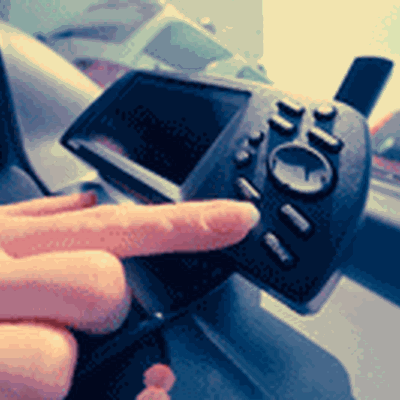There is plenty of controversy about how safe GPS devices are. Whether they increase or decrease safety depends on the driver. However, when used correctly, a GPS can be a great safety addition to any vehicle. The following reasons show good examples of why drivers are safer with a GPS system.
Drivers know where they are going. Lost drivers are usually distracted and dangerous additions to the road. They speed up, slow down and spend more time looking at signs than watching the road. When a GPS is used correctly, drivers can focus on the task of driving while the GPS navigates. If a turn is missed, the GPS will automatically recalculate the route to compensate.
Driving at night is safer with a GPS. Most people find it more difficult to drive at night or in low-visibility conditions. Fortunately, a GPS has the ability to warn the driver of upcoming turns or ramps before it is time to use them. The map previews are especially helpful for driving on dark back roads.
There is no need to deal with awkward paper maps. Juggling large paper maps and trying to refold them is a difficult task. Trying to read these maps while driving creates several hazards. Having a passenger try to read the maps might not always be beneficial. This is why it is easier and safer to get a GPS device.
There are special safety features. Hands-free features allow for calling the police while driving. There are also features for locating nearby hospitals, good repair shops and a wide variety of other destinations.
It is easy to choose the right lane. Some streets and freeways are confusing. Certain lanes may turn into exits, and congested traffic makes such situations worse. A good GPS system will tell drivers which lane to stay in, which exit to take and when to turn.
How to Turn a GPS into a Safety Aid
The first driving task any person should accomplish is to be aware of his or her surroundings. By following some simple rules, drivers can stay aware and maximize the safety features of their GPS devices.
Learn to use the device before taking off. Although most people learn the basic functions before getting on the road, very few thoroughly learn the overall system. Beginners should practice using the GPS and become comfortable with the touchscreen. Make sure the features are optimized for visibility. One mistake many beginners make is keeping their eyes on the screen too long.
Never program the device while driving. Every start-up screen and safety manual reiterates this important tip. Enter the destination prior to departing. If it is necessary to change or cancel the destination while driving, pull over to a safe place to re-program it. Fortunately, some newer devices prohibit re-programming while the car is in motion.
Mount the GPS device in a safe place. When choosing a spot for the GPS, make sure it does not conflict with important sight lines. Positioning it near the dashboard is a good idea.
Always rely on the voice directions. Although it might be necessary to glance occasionally at the map, try to rely mostly on voice directions. Avoid staring at the map. If it seems confusing, pull over to study it.



